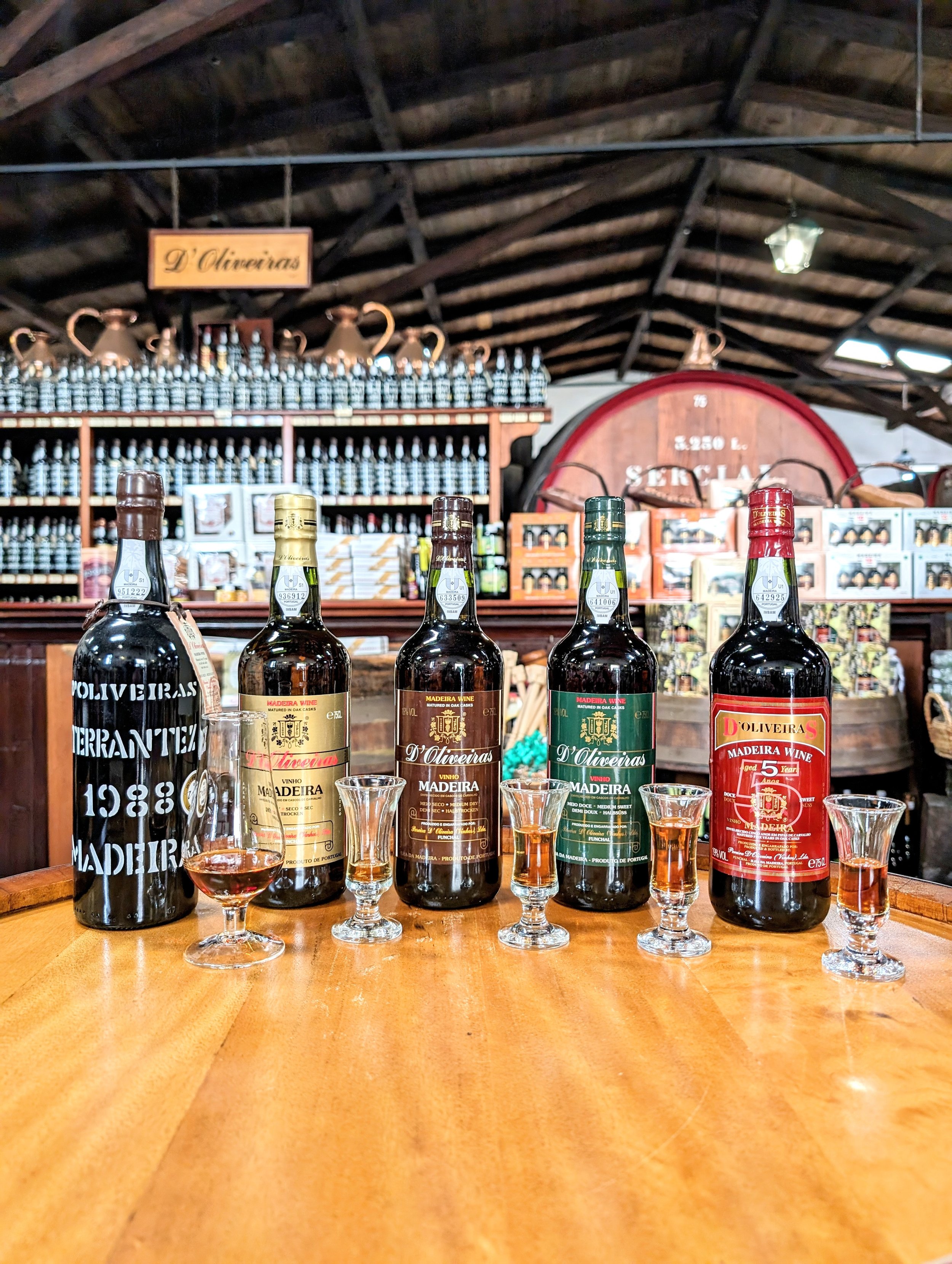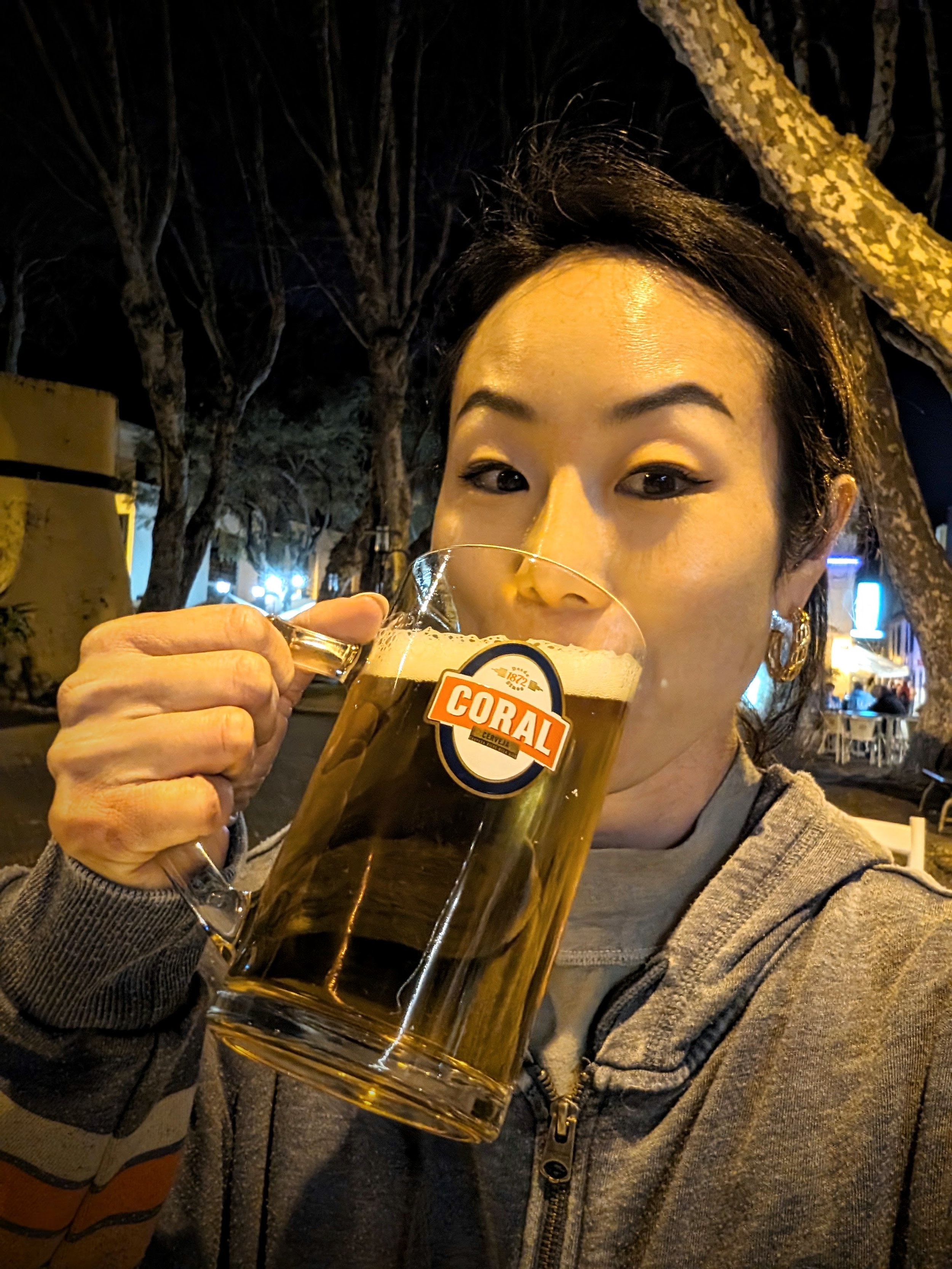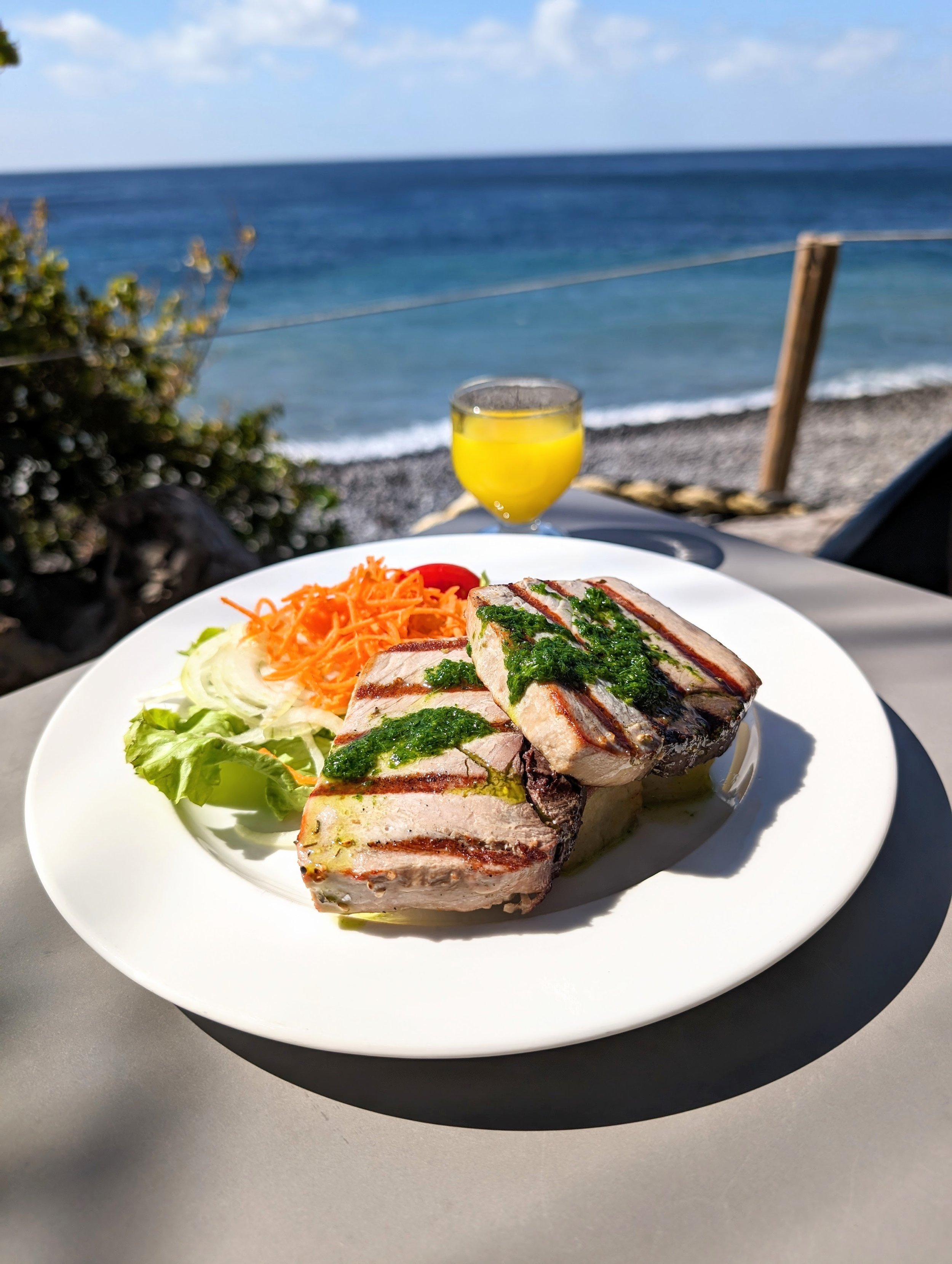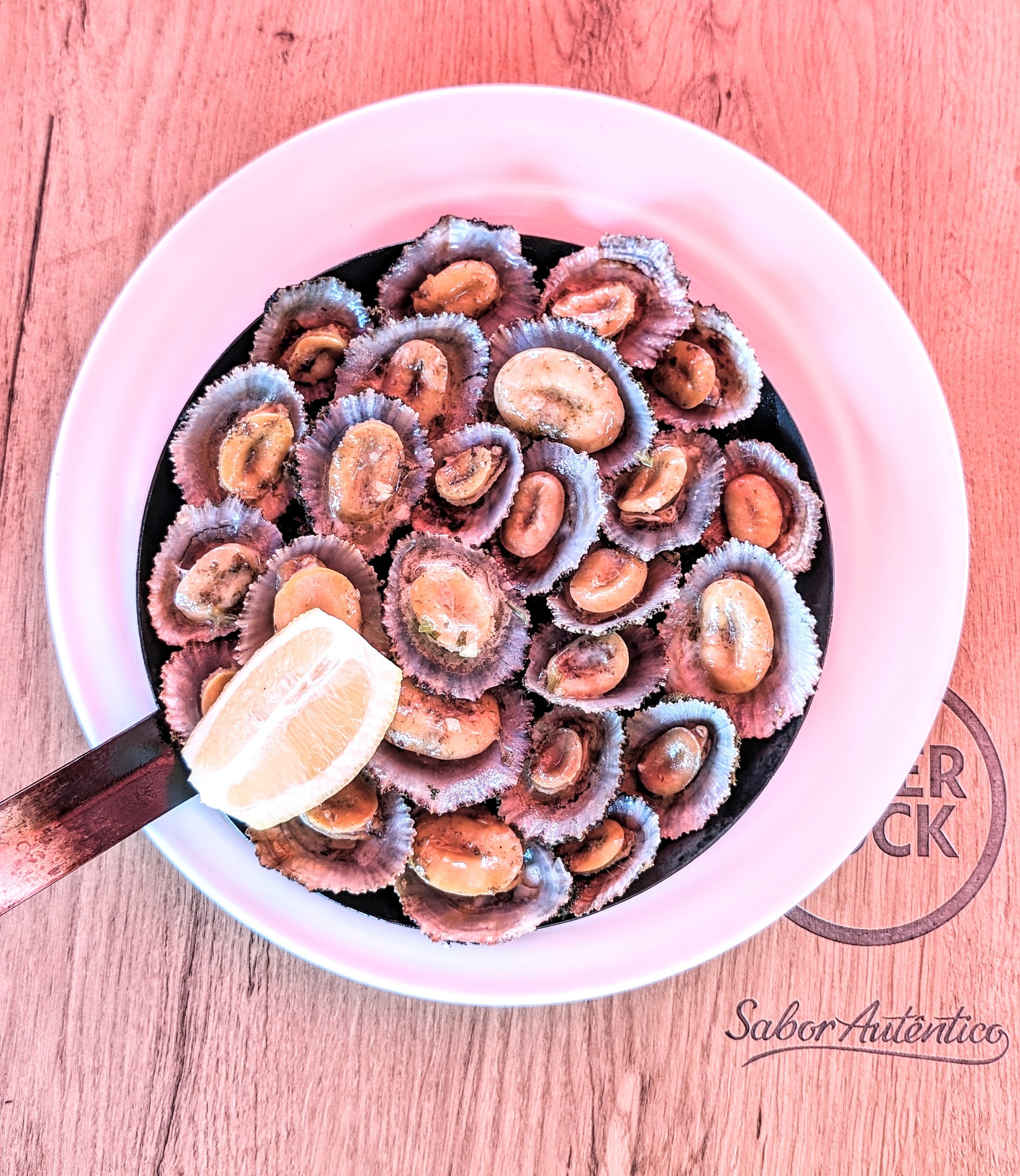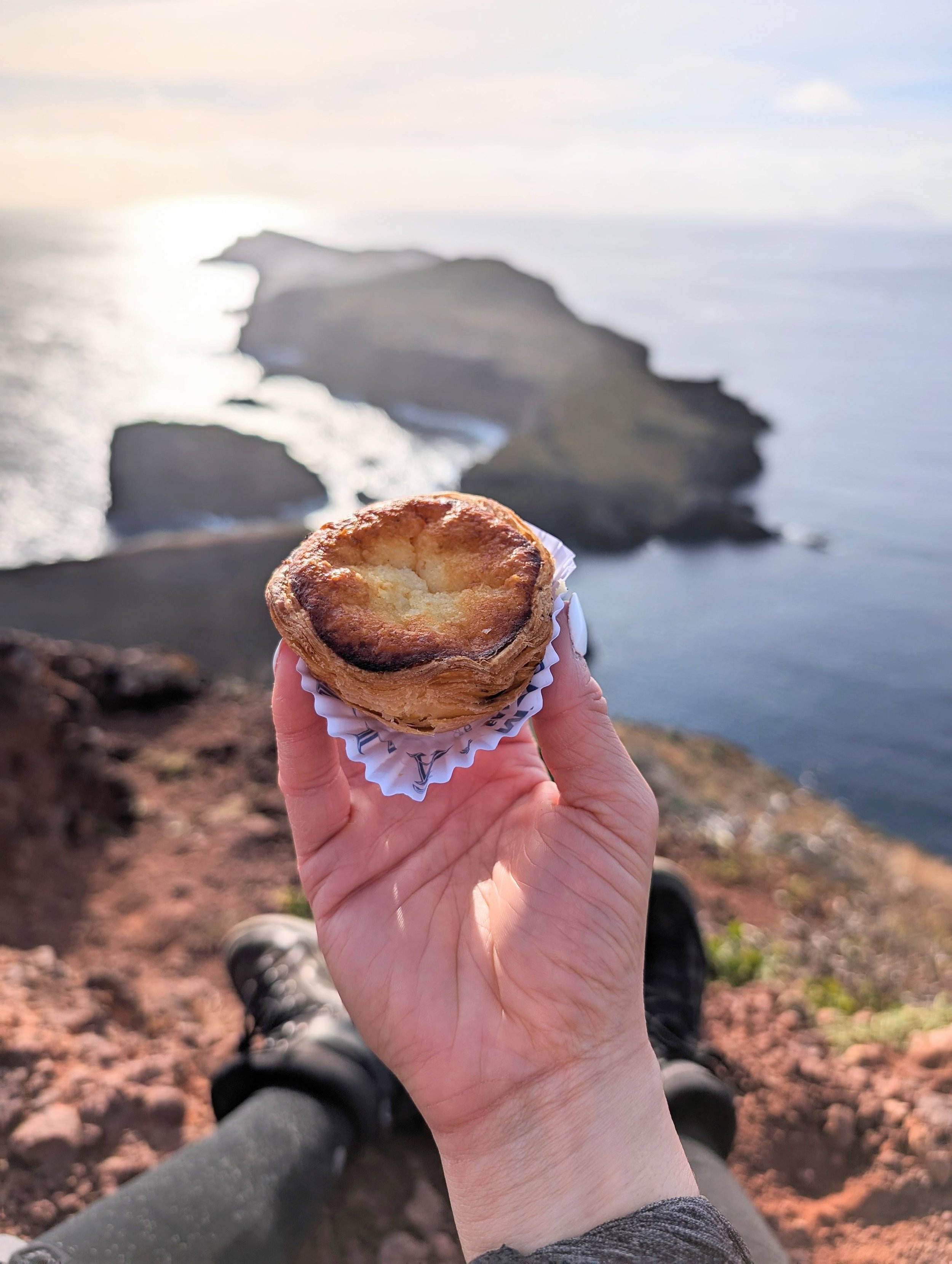Madeira Travel Guide: Hiker’s Paradise
I had a free week off from work at the beginning of March 2023, and leading up to this week, I could not decide where I wanted to visit. Did I want to visit another wine region? Should I use the time to do my annual surfing trip? Should I take advantage of the opportunity to unplug from my e-mails and phone and go hiking off the grid somewhere?
I hemmed and hawed until I was one week away from my vacation week, and thankfully, my WSET Diploma wine friends suggested the island of Madeira in Portugal, which had all three of the elements I was weighing on my search for my next adventure abroad. Madeira has warm beaches and stunning coastlines for surfing, and Madeira wines were something I had been wanting to learn more about ever since taking my WSET D5 Fortified Wines course. Ultimately, though, the hiking and natural beauty of Madeira was the element that stole my heart when I was there.
Ever since coming back from my trip, I have been raving about the wonders of Madeira. Take a look below at a glimpse of my week in Madeira and my tips for planning your next trip to Madeira.
Fast Facts about Madeira
Bananas everywhere!
Madeira is a Portuguese archipelago (a set of islands) located in the Atlantic Ocean just under 4,000 kilometers (250 miles) north of the Canary Islands in Spain. “Madeira,” as most travelers know it, is the largest island out of the archipelago and is on a similar latitude as Morocco and Algeria in Africa. Only comprising approximately 740 kilometers (286 square miles), it only takes four hours to drive around the island.
With its tropical climate, Madeira’s industry is centered very much on growing sugar cane and tropical fruit, such as mangoes, bananas and passion fruit.
Madeira is the home of the namesake fortified wine, Madeira. Travelers can visit the historic Madeira wine lodges dotted in and around the capital city of Funchal.
Madeira is perfect for outdoor adventurers. Madeira has numerous hiking trails, beaches for surfing and boat excursions for whale watching.
One of the most famous soccer (football) players in the world, Cristiano Ronaldo, was born in Madeira.
Hiking Trails
PR8 - Vereda da Ponta de São Lourenço
In Madeira, "vereda" refers to trails generally, while "levada" walks follow the levadas, which are manmade irrigation channels intersecting the island, a unique feature of the island. Due to the more inland locations, the levada walks tend to have more lush forest scenery.
Levada walk
The hiking trails that are officially recommended by the Regional Government of Madeira are marked as “PR” with a number following it (e.g., “PR 1”). In addition to these “PR” routes, there are several other unmarked footpaths for hiking all over the island.
My strongest recommendation with respect to hiking is to start early in the morning. Early morning is when the hiking trails are the least populated and you can enjoy the views in peace before the tour buses with tourists and schoolchildren arrive.
In addition, parking is usually not an issue early in the morning. I arrived at the hiking trails somewhere between sunrise and an hour after sunrise and was always able to park in the primary parking lot.
As always, make sure to take care of your own safety and wear appropriate clothing and footwear. Because of the frequent downpours in Madeira, the hiking trails are often full of puddles and extremely muddy. I wore leggings with hiking pants over them and felt totally impervious to the elements, and I also wore Gortex hiking boots with good ankle support for maximum flexibility and traction on the trails.
My favorite part about hiking in Madeira was that you can hike every day and get completely different views and experiences with each hike. I stayed in Madeira for five nights and went on the following four day hikes (in chronological order):
(1) PR8 - Vereda da Ponta de São Lourenço: A 3 km in-and-out trail (6 km total) along the eastern coastline to the eastern point of Madeira. After the PR1 trail (see below), this was my favorite trail. The entire trail is open-air, so you are seeing panoramic views for the entire time you are hiking.
PR8 - Vereda da Ponta de São Lourenço
(2) PR11 - Vereda dos Balcões: A 1.5 km in-and-out trail (3 km total) through the interior forests of the island to the Balcões Mirador. This is one of the easiest trails, as it is relatively flat and short and can be walked in just tennis shoes, although the forest trail can be muddy. I had originally intended to hike the nearby PR1 instead that day, but the weather conditions there were so terrible that I decided to drive to PR11 in order to at least get a hike in that morning. This trail is a good option for those who would like to undertake a shorter, less strenuous hike and still see the levadas and the forests.
PR11 - Vereda dos Balcões
PR11 - Vereda dos Balcões
(3) PR1 - Vereda do Areeiro to Pico Ruivo: The most famous hiking trail in Madeira, this in-and-out 7 km trail to Pico Ruivo and then back to Vereda do Areeiro (total 14 km) is truly epic. The hike is challenging because the steps can be quite steep, and the hike is long (approximately 3.5 hours each way with good physical condition), but this hike has the best views on the island. The scenery keeps changing, so you are descending below ghostly mountain peaks and winding through the sides of the mountains past a couple of dark tunnels as you head to Pico Ruivo to emerge above the clouds for the panoramic mountain-top views.
PR1 - Vereda do Areeiro to Pico Ruivo
PR1 - Vereda do Areeiro to Pico Ruivo
PR1 - Vereda do Areeiro to Pico Ruivo
PR1 - Vereda do Areeiro to Pico Ruivo
(4) Vereda da Penha d'Águia: This was, by far, the most challenging hike for me. Approximately 600 meters up the side of a mountain, this hike is less about distance and more about the gradient, as you are just hiking vertically uphill all the way to the mirador at the top. The steep hike did not really bother me, but it was actually the fact that, unlike the three hikes above, the trail is unmarked after the initial entrance, and the trail contains numerous forks in the road that do not indicate which direction you should be heading in. The views were absolutely stunning, but I was lost for hours on this trail by myself while searching for my way back, and it was also one of my most frightening hiking experience ever, as I did not see a single other person on the mountain that day. I luckily had GPS service on the mountain to be able to navigate myself back to the mirador at the top and climb back down, but I highly encourage anyone undertaking this trail to hike it with an experienced guide.
Vereda da Penha d'Águia
My hiking packing list:
These boots were made for hiking
Here is a list of recommended items to pack for hiking in Madeira:
Hiking daypack
Umbrella
Light, water-resistant rain jacket and other clothes for layering
Hiking gloves
Hiking pants
Baseball hat
Beanie (or other hat that covers the ears)
Hiking boots
Hiking socks
Refillable water bottle
Sunscreen (50 SPF+)
Mosquito Spray
Sunglasses
Tripod for cell phone
Battery power bank x 2, plus extra cords
Hand sanitizer
Napkins
Hiking snacks
Ziplock bags for packing snacks and disposing trash
First aid kit
Six General Recommendations for Madeira:
1. Rent a car. Yes, there are bus lines that can take you to the hiking trails and other areas around the island, but from talking to people in Madeira, my perception is that these buses can be extremely unreliable and have frequent delays. Unless you are spending weeks in Madeira or otherwise on a very limited budget, rent a car and buy yourself some freedom and flexibility. My car rental through Avis for five days cost US$170, and I only used half a tank of gas driving around the island for four days. The main highways are modern, well-maintained and actually enjoyable to drive, with beautiful views of the island all around. Even the roads to the mountain hikes were comfortable to drive on.
With respect to parking, I never had issues with finding parking in my home base in Machico, but in the main city of Funchal, parking was extremely scarce, and for the most part, consisted of paid parking on the streets or in underground paid parking lots.
2. Shoulder season is the best season. Apparently, the high season for Madeira is, as with many other places in Europe, late spring through the beginning of fall. I visited Madeira during the first week of March, and I thought that it was the perfect time to visit the island! During my week in Madeira, I experienced temperatures ranging from 3 degrees Celsius to 17 degrees Celsius and snow and rainy conditions to full blasts of sunlight within hours, but that is also Madeira. You can experience all four seasons during a week, or even a day, there.
In addition to the great weather during my week in March, the lack of hordes of tourists made the entire experience of getting around the island, parking at hiking trail entrances and getting into tasting rooms and restaurants and bars immensely easy. Madeira has already been discovered by the Europeans as Europe’s best-kept secret vacation spot, but the accommodations and food and beverage scene in Madeira have not expanded significantly to accommodate the higher number of tourists in the recent years.
3. Bring an umbrella. In Madeira, the weather changes quickly and constantly during the day. Even if the skies seem sunny and bright, bring an umbrella when you leave your car or accommodations so that you don’t get stuck waiting for the rain to pass!
Also, the weather is extremely location-specific. Madeira is a small island, but when looking up the weather for hiking, it is not sufficient just to look up the weather for “Funchal.” In general, the weather in the center of the island tends to be the coolest (not surprising, as the center contains the majority of the taller mountains and forest lands), and the southern and eastern regions tend to be the driest and warmest. Some of the hiking trails (for example, Vereda do Areeiro to Pico Ruivo) have more precise weather forecasts and current weather livestreams available online so that hikers can see what the weather conditions look like before they drive up there and can plan their days or weeks accordingly.
4. Are there mosquitos in Madeira? Mosquitos love me, so I always want to know what the mosquito situation is like before I travel. Although some parts of Madeira are completely arid, the forests and more inland locations can be more humid, and during the warmer summer months, the island can experience higher levels of humidity everywhere.
During the first week of March when I was there, the weather was breezy and cool. I did see a few mosquitos here and there, but I brought mosquito spray with me and did not get bitten during my stay.
5. The attire in Madeira is refreshingly relaxed. Because many people visit Madeira for the physical activities - hiking, diving, surfing or boating - most people walk around in hiking boots, running shoes or sandals. Embrace the chill island life!
6. Get out of Funchal! Funchal is the capital city of Madeira and the largest city on the island. Most of the major hotels and wine lodges are located in Funchal, so it is a convenient home base for accommodations. However, the natural beauty of Madeira is one of the main draws of the island, and the best views of the iconic terracotta-roofed buildings of Funchal can be seen from outside of the city. If renting a car is not possible, there are numerous tour buses and taxis that can be hired to take tourists on day trips.
Pulled over to the side of the road to take in the views of Funchal!
Food, Wine and Drinks in Madeira
Madeiran pastries!
There are two things I absolutely loved about Madeiran food and drinks culture: (1) you always get a snack with your drink at a proper establishment; and (2) Madeirans put copious amounts of garlic over everything.
Fortified Wine
Wine tasting at d’Oliveiras
The most famous wine of Madeira is the sweet fortified wine, Madeira. Check out my previous article on the basics of Madeira wine here!
Most of the wine lodges are located in or near Funchal and can be visited by dropping in or by making an appointment. I was so busy surfing with Madeira New Wave or hiking that I actually made it to only one wine lodge during my week in Madeira, but I made sure that it was a good one, Pereira D'Oliveira!
Some cool facts about this producer:
(1) Pereira D'Oliveira is the owner of one of the largest stocks of old Madeira wines dating back to 1850.
(2) They were one of the first producers on the island to add bottling dates on their back labels, and they believe in long ageing in wooden casks.
(3) Pereira D'Oliveira remains a family business dating back from the 1880s when it was founded by João Pereira D'Oliveira!
1988 Terrantez, one of the rarest fortified wines on the planet!
Their standard tasting features medium-dry, medium-sweet and sweet wines, which are, frankly, not that interesting.
However, you can also ask to taste other wines in their library, and this is really your chance to try some truly rare Madeira varietals, like Terrantez, an incredibly prized variety that almost died out due to its low yields and susceptibility to powdery mildew (a real issue on a sub-tropical island prone to humidity).
I highly recommend a visit to this wine lodge and to mix it up with your own tasting requests. Please do, however, purchase and bring home their wines after you are done with your tasting, like the 2009 Malvasia I brought back to share with my friends in New York City!
Sharing Malmsey and donuts in New York with my wine friends
Side note: A lot of people asked me whether I discovered any under-the-radar producers in Madeira. While I am someone who usually likes to explore smaller wineries while traveling, the Madeira wine business is a highly consolidated industry of just a few historic producers under umbrella companies. As a result of this high level of consolidation, small, “under-the-radar” fortified Madeira producers are quite rare, and the benefit of the larger, more established Madeira producers is that they tend to hold a significant stock of aged wines.
Non-Fortified Wine
Quinta do Barbusano Aragonez (Tempranillo)
Not everyone appreciates sweet, fortified wine. If dessert wine is not your thing, dry table wines are also made on Madeira, and Madeira has its own regional appellation for dry table wines, DOP Madeirense!
Based on the recommendations of my fellow wine lovers, I picked up a bottle of 2020 Quinta do Barbusano Aragonez from my local wine shop in Machico. Considered one of the most notable still wine producers in Madeira, they are located in São Vicente on the northern side of the island and open for winery visits.
Aragonez is the regional term for Tempranillo, and to me, this wine tasted like a light, slightly smoky or ashy Tempranillo with low tannins and no significant oak influence.
I packed the remainder of my bottle in my hiking backpack to enjoy on the top of Penha d'Águia with a queijada, a flat pastry filled with creamy cheese, eggs and sugar, one of my favorites in Madeira!
Hiking snack
Poncha
A glass of poncha for less than €2, served with a small tray of peanuts and brined, garlicky lupini beans
Poncha is the traditional alcoholic drink of Madeira made of aguardente de cana (brandy or rum distilled from sugar cane juice), honey or sugar and fresh-squeezed fruit juice. A fun fact about this drink is that it is often thought to be the inspiration for the traditional Brazilian alcoholic drink, caipirinha.
There are a few different variations of poncha, including:
(1) Pescador (fisherman's poncha): brandy, lemon juice and sugar
(2) Regional: brandy, lemon juice, orange juice and sugar
(3) Tangerina: brandy, tangerine juice, orange juice and sugar
(4) Passion fruit: brandy, passion fruit pulp and sugar.
The fruit juice is supposed to be freshly squeezed and the ingredients mixed or muddled together to order with a traditional stick called the "caralhinho." Locals say to avoid any place serving pre-mixed poncha, including the ready-to-drink bottles sold at the airport!
Mixing poncha with the caralhinho
True to Madeiran drinking culture, poncha is usually served with a small snack to munch on. The snack helps especially because, while poncha is fruity, it has a deceptive alcoholic punch to it, as the brandy in poncha traditionally has at least 40% alcohol in it.
Coral Beer
The main beer on the island is Coral Beer. A refreshing light lager, it was often my drink of choice after a hike or a surfing session.
Food
Tuna fish steak and poncha on the beach
Since Madeira is an island, seafood is one of the main features on restaurant menus, and I especially enjoyed their garlic butter prawns and grilled limpets in garlic, olive oil and butter.
Garlicky grilled limpets
As I noted above, the Madeirans slather garlic on everything, including their delicious bolo do caco (traditional flatbread), and the aroma of garlic actually wafts around the restaurants in the villages. For those on a budget, a bolo do caco sandwich with steak or cheese and ham is an excellent low-cost meal.
Ham and cheese bolo do caco washed down with a half-bottle of Vinho Verde
Had too much seafood? Steak frites and other beef dishes are also a staple of Madeiran cuisine.
Wolfed down this steak frites platter in Funchal after my PR1 hike
Last, but not least, don’t sleep on the Madeiran pastries. I went to my local bakery after dinner each night to choose my pastry for my hike the next day, and enjoying that pastry at the top of the peaks was one of the best feelings in the world.
A Madeiran cheese tart sitting on top of Ponta de São Lourenço
Have you been to Madeira? Is it on your bucket list?















